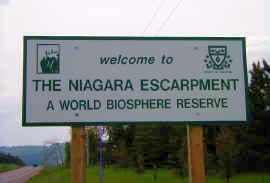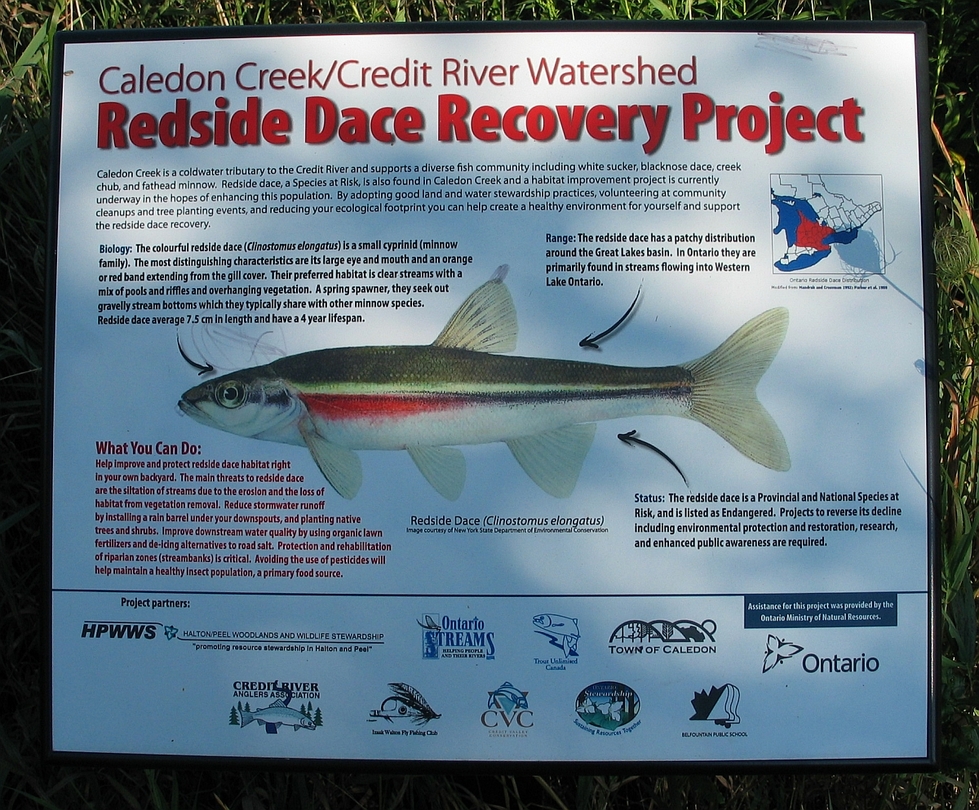PitSense is a community of people organized to respond to proposals for further increases in the number and size of aggregate operations in Caledon.
We are opposed to the continuing 'Domino Effect' growth of open pit mines and quarries in the agricultural and rural residential areas of the Niagara Escarpment and UNESCO World Biosphere Reserve.
UNESCO’s Man and the Biosphere (MAB) Programme was launched in 1971 with the aim of promoting interdisciplinary research, training, and communications in the field of ecosystem conservation and the rational use of natural resources. The MAB Programme is suited to respond to the results of the 1992 United Nations Conference on Environment and Development (UNCED) and especially the objectives of the Convention on Biological Diversity.
Biosphere reserves are areas of terrestrial and coastal marine
ecosystems which are internationally recognized under the MAB
Programme. Biosphere Reserves are much more than just
protected areas as they are designed to promote and
demonstrate a balanced relationship between people and
nature. They are nominated by national governments and
remain under the sovereign jurisdiction of the States where
they are situated.
Biosphere reserves form a World Network for promoting cooperative
research and monitoring as well as exchanges of information. A key
element of this Network is the development of strong regional
sub-networks. The definition, criteria and designation procedure of
biosphere reserves are set out in the Statutory Framework adopted
by the UNESCO General Conference in 1995. The Seville Strategy
for Biosphere Reserves identifies objectives for biosphere reserves at
the site, national and international levels.
Many sites, including the Niagara Escarpment, have been designated for over ten years and hence are subject to the Periodic Review foreseen under Article 9 of the Statutory Framework. This Review aims to encourage the authorities concerned to revise the status and functioning of their biosphere reserves in the light of the Statutory Framework. This review can lead to improved integration of conservation, development and scientific research concerns in existing biosphere reserves, extension of existing biosphere reserves, and the establishment of transboundary biosphere reserves for enhanced international cooperation to sustainably manage shared ecosystems.
Our Niagara Escarpment Biosphere Reserve was established in 1990. 20 years have passed and we believe it is time for a Periodic Review in order to determine whether the appropriate balance has been achieved between people, nature, and exploitation of resources.
The area that is at risk by the current Blueland Farms application is part of the Escarpment
designated as "Escarpment Rural". The Niagara Escarpment Commission website states:
"The Niagara Escarpment Biosphere Reserve also involves a buffer area of limited resource use and consists of areas designated "Protection" and "Rural" by the NEP. The area of cooperation (also known as the transition area) involves the NEP designations of"Urban," "Minor Urban," "Recreation", and "Mineral Resource" . The cooperation zone is the large outer part of the biosphere reserve where people live and work, using the natural resources of the area in a sustainable manner." (emphasis added)
PitSense believes that the words "limited" and "sustainable" are meaningful. We are calling on our legislators and regulators to pay more heed to these words when further degradations of our Escarpment Biosphere Reserve are being proposed.
SPECIES at RISK - One documented species that is present
on the McCormick site is the MILKSNAKE. It is identified by the
Credit Valley Conservation Authority as one of 44 'Species at Risk'
in the Credit Valley Watershed.
HOME ABOUT WHAT'S NEW MAPS/PHOTOS CONTACT
“Unless someone like you cares a whole awful lot, nothing is going to get better. It’s not.”
— Dr. Seuss, The Lorax
Copyright © 2010-2024 PitSense Niagara Escarpment Group Inc.
All rights reserved
endangered species:'Rapids Clubtail'
species at risk: 'Blanding's Turtle'.
This Dr. Seuss classic is entertaining for children, but also HIGHLY INSTRUCTIVE for grownups. Watch the video with your kids and recognize its relevance! It tells the story of how the 'Onceler' ravages the natural environment for corporate profit.
Ontario's Environmental Commissioner Gord Miller says: "The startling thing about this childrens’ story is how accurately it presents ... the flawed economic model that demands relentless limitless growth based on finite resources ..." (click HERE)
 The Earth Is My Church by Alex is licensed under a Sampling Plus.
The Earth Is My Church by Alex is licensed under a Sampling Plus.The 3rd Nobel Laureate Symposium was held in Stockholm, Sweden on 16–19 May 2011. The sessions during the Symposium revolved around three themes, which also reflected the scientific background reports:
1 . RECONNECTING TO THE BIOSPHERE: Dealing with the role of natural capital and the life-supporting environment as the foundation for societal development and provider of services for human well-being.
2. THE HUMAN DOMINATED PLANET: Focusing on the advent of the Anthropocene – the new geological epoch dominated by humanity – and on recent attempts to identify the safe operating space for humanity to continue to develop within a stable planet Earth.
3. TIPPING TOWARDS SUSTAINABILITY: Exploring the links between crisis, opportunity and innovation for navigating shifts and large-scale transformations towards global sustainability.
PitSense believes that the themes of this symposium are a strong signal that our societal priorities are overdue for reevaluation. The views expressed regarding 'Natural Capital' are particularly relevant and in sync with our efforts regarding 'Full Cost Accounting'.
Our ability to come together to stop or limit damage to the world's environment will be perhaps the greatest test of how far we can act as a world community. No-one should under-estimate the imagination that will be required, nor the scientific effort, nor the unprecedented co-operation we shall have to show. We shall need statesmanship of a rare order. ...
For two centuries, since the Age of the Enlightenment, we assumed that whatever the advance of science, whatever the economic development, whatever the increase in human numbers, the world would go on much the same. That was progress. And that was what we wanted.
Now we know that this is no longer true.
We have become more and more aware of the growing imbalance between our species and other species, between population and resources, between humankind and the natural order of which we are part.
In recent years, we have been playing with the conditions of the life we know on the surface of our planet. We have cared too little for our seas, our forests and our land. We have treated the air and the oceans like a dustbin. We have come to realise that man's activities and numbers threaten to upset the biological balance which we have taken for granted and on which human life depends.
We must remember our duty to Nature before it is too late. That duty is constant. It is never completed. It lives on as we breathe. It endures as we eat and sleep, work and rest, as we are born and as we pass away. The duty to Nature will remain long after our own endeavours have brought peace to the Middle East. It will weigh on our shoulders for as long as we wish to dwell on a living and thriving planet, and hand it on to our children and theirs.
......... Margaret Thatcher
BIOSPHERE









